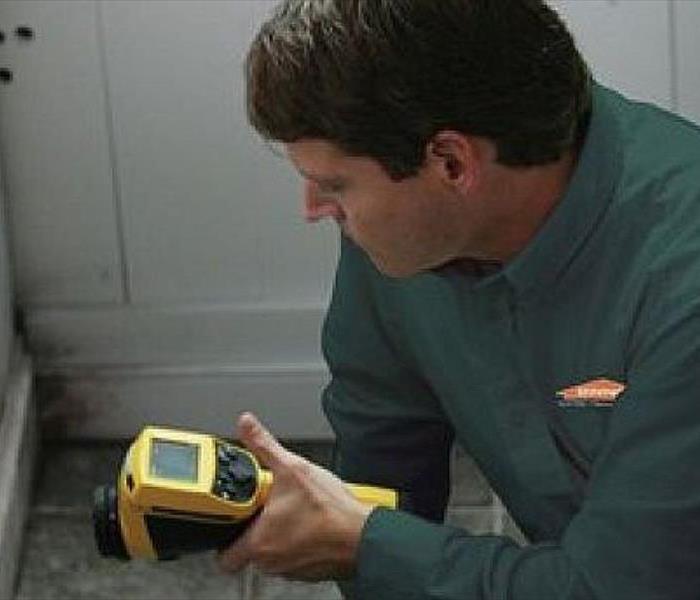Monmouth County: Do You Have Mold?
4/14/2015 (Permalink)
Older homes are prime habitats for mold, which thrives in a dark, damp, warm environment. If you have water damage, water leaks, a leaky roof, a washing machine that overflows frequently, that moisture can give mold a toehold.
In some instances, it can be hard to see the water damage. SERVPRO professionals can use a moisture meter and infrared cameras see if anything is leaking.
So what can you do to reduce your exposure to mold? Attack mold on two fronts -- removal and prevention:
· Get your house tested for mold. A moisture meter test will help. Also, a dust sample from your carpet can show whether mold spores are in your home. Check with your state health department or find a local environmental testing company.
· Fix leaky plumbing or other sources of water. If you have mold in your crawl space or basement, locate the source and stop the water from coming in.
· If your crawl space has mold, call SERVPRO of Eatontown/Long Branch to put a remediation plan in place to get rid of it.
· Check inside drywall for mold inside the wall. You can usually smell mold even if you can't see it. Moldy drywall must be cut out and replaced. Moldy insulation also must be removed and replaced.
· Dry water-damaged areas and items (like carpeting) within 24 to 48 hours of flooding. Don't install carpeting in areas where there is a moisture problem.
· If ceiling tiles or carpet have become moldy, they must be replaced. Throw out all wet, moldy tiles and carpeting.
· Reduce indoor humidity by venting bathrooms, dryers, and other moisture-generating sources. Exhaust fans in bathrooms and kitchens can help. If you don’t have exhaust fans, crack a window in the kitchen when you're cooking or in the bathroom when you're bathing.
· Use air conditioners and dehumidifiers inside your home. Change filters regularly. Use a dehumidifier to get rid of dampness in basements.
· Add insulation to windows, piping, exterior walls, roof, or floors where there is potential for condensation on cold surfaces.
Find out more: http://www.SERVPROeatontownlongbranch.com/mold-removal-remediation





 24/7 Emergency Service
24/7 Emergency Service
